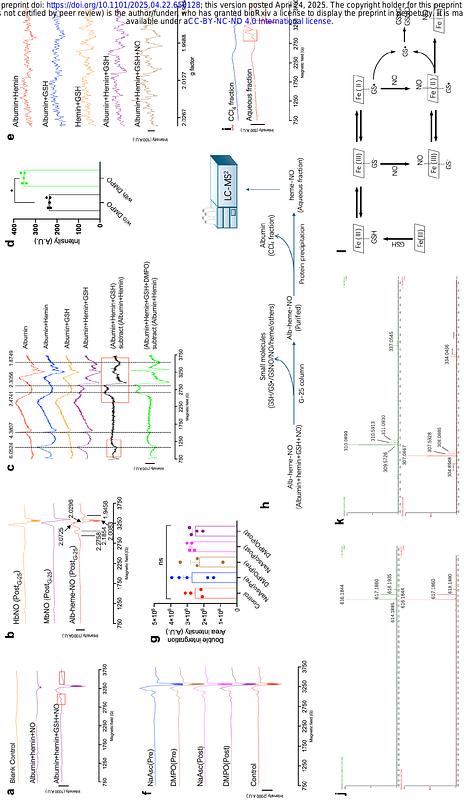Heme-NO dilates arteries via mobilization of NO moieties from a vascular intracellular NO store

Heme-NO dilates arteries via mobilization of NO moieties from a vascular intracellular NO store
Liu, T.; Zhang, M.; Zhu, L.; Ke, H.; Souza, A. d.; Li, Q.; Castella, D.; Lehnert, N.; Zhang, L.; Blood, A. B.
AbstractNitrosyl heme (heme-NO) has recently emerged as a surrogate signaling entity for nitric oxide (NO). However, questions remain about how heme-NO signals across the cell membrane. Herein, we test the hypothesis that heme-NO signals as a nitrodilator that vasodilates by mobilizing NO moiety from a nitrodilator-activated intracellular NO store (NANOS) in the vasculature. We identify a novel mechanism for glutathione-catalyzed formation of a model compound, alb-heme-NO, and determine glutathione (GSH) as a ligand in its structure. Heme-NO complexes with plasma proteins in blood and, as such, it is impermeable to red blood cells or the vascular wall. Alb-heme-NO-mediated vasodilation, both in vitro and in vivo, is attenuated by prior depletion of the NANOS and potentiated by NANOS supplementation. Incubation with alb-heme-NO induces efflux of NO moieties from arteries. Additionally, the role of nitrosyl hemoglobin (HbNO) in mediating NO bioactivity export from erythrocytes is challenged. In conclusion, heme-NO functions as an extracellular nitrodilator via activation of the intracellular NANOS.